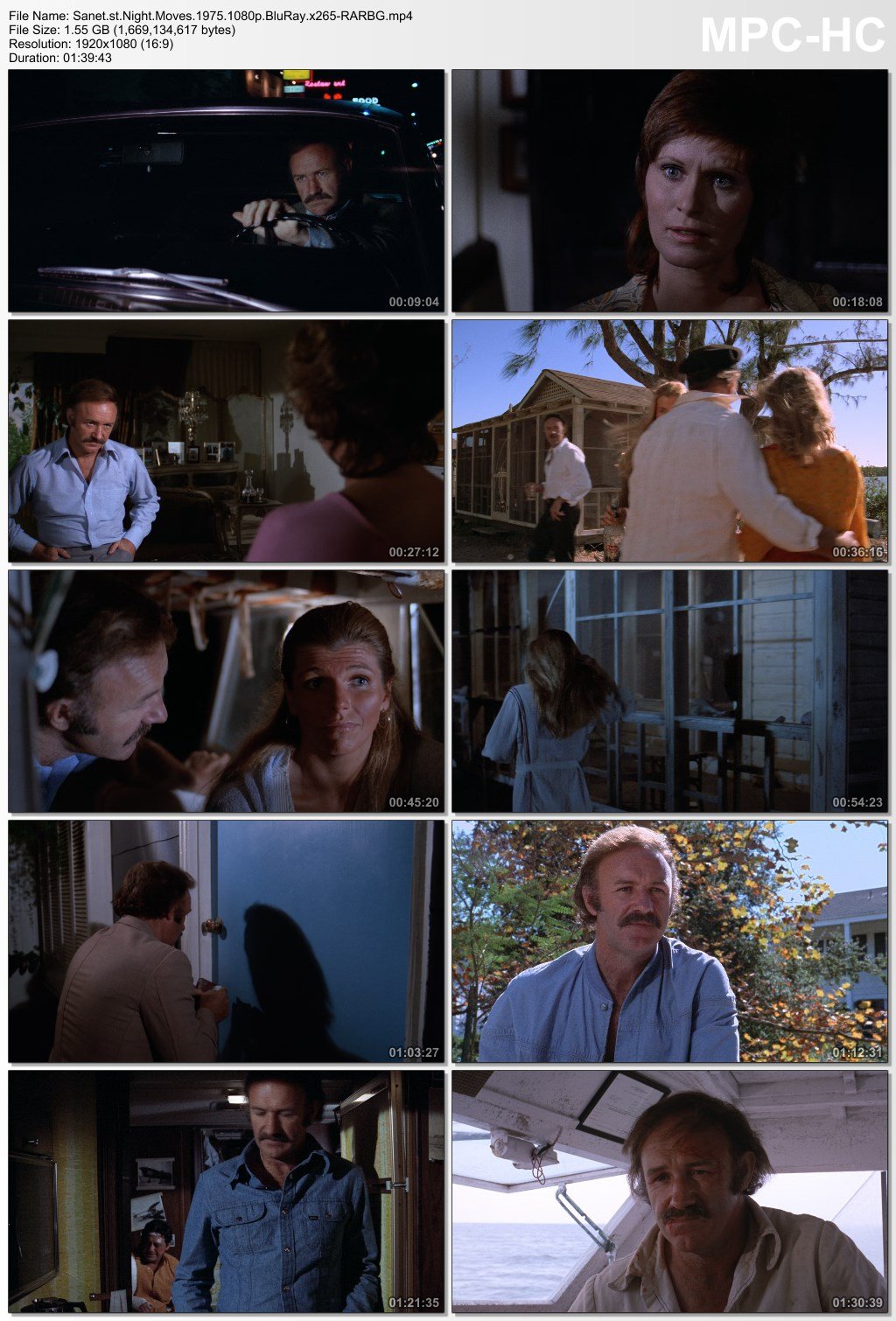
It was kinda like watching paint dry." Then he stakes out the theater and sees her meeting a man Harry doesn't know. His wife, Ellen ( Susan Clark), asks if he wants to go see " My Night at Maud's," but he tells her, "I saw a Rohmer film once. Harry takes the job but first does a little sleuthing on his own time. Her 16-year-old daughter, Delly, has run away from home, and she wants Harry to find her, although if Harry wants to have a drink with Arlene first, that would be nice. Arlene Iverson ( Janet Ward) is a onetime B-movie sweater girl who married a couple of rich guys - one dead, the other ex - and must be lonely, because she greets Harry dressed as if she's hired him to look at her breasts.
#Night moves 1975 x videos movie
And if so, it would be a fascinating example of how cutting a great scene can in some instances help to sculpt a masterpiece.As the movie opens, he is summoned to the kind of client who would be completely at home in a Sam Spade or Philip Marlowe story. “It was good in, it was good out.” But he did offer that the scene as shot was “too complete,” and that he “wanted to keep them (Harry and Paula) ungrounded,” which at the very least is consistent with my “balance of power” perspective. When I had the opportunity to interview Penn, he would not decisively tip his hand: “I looked at it so many times,” he told me. And the fate of Harry’s marriage to his unfaithful wife Ellen (Susan Clark) was, very incongruously for a noir, a central thread of the film-at least as important as the “mystery.” At least it was for Penn – Sharp had little love for Ellen (or for Harry, for that matter) – whereas Penn wanted to keep the possibility of their reconciliation on the table, even revising specific scenes to allow for this likelihood.

Why then, did Penn leave the scene out? My theory is that it would have too decisively shifted the narrative’s balance of (emotional) power in favor of Harry’s relationship with Paula.
More intriguing still is that Penn’s most intimate collaborator – on this film and many others – editor Dede Allen, described it as “a wonderful scene, just heartbreaking.” She was also, in her words, “very, very upset,” when Penn chose to cut the scene. Screenwriter Alan Sharp fought for the longer scene’s inclusion, describing his “huge disagreement with Penn” over the issue and how he was “offended” by the decision. (In my interview with Warren, she described the scene as “intimate emotionally as well as physically.”) But to enormous (within the production) controversy, Penn decided to delete the more elaborate (and by seventies standards, risqué) encounter and go instead with the truncated version. As initially shot, that sex scene was longer, and vividly intense. When Paula (Jennifer Warren) comes to Harry’s room late in the evening, eventually they make love.

(You never gave much thought to Sam Spade’s childhood, did you?)Ī consideration of Night Moves could easily fill a short book, so I’ll limit the discussion here to one brief scene-and one you’ve never seen, because it was left on the cutting room floor. Moreover, Night Moves – a film ultimately about the investigator (Gene Hackman as Harry Moseby), not the investigation (McGuffins about missing persons and some sort of smuggling) – also magnificently illustrates “the inward turn” so essential to the seventies film. Self-evidently marked by the influence of noir, and, indelibly, by the French New Wave, Penn’s film is deeply concerned about the fate of America, and its loss of innocence in that ten year period characterized by the Kennedy assassinations (essential psychic landmarks in this film), and (more implicitly) by the wreckage of Vietnam and Watergate. I have discussed this film briefly in a review, and also at much greater length in Hollywood’s Last Golden Age, both to celebrate its abundant pleasures but also because Night Moves exemplifies so much of what the New Hollywood was about. The peerless Chinatown (1974), set in 1937, brought the seventies back to the past Night Moves, which also recognized (and manipulated) the indelible influences of noir on contemporary film culture (and on real life), adapted and updated those sensibilities and applied them to the problems of the present.

Arthur Penn’s astonishingly brilliant Night Moves (1975) was the neo-noir that most successfully carried a nuanced and thoughtful appreciation of the landmark films noir of the 1940s into the revised milieu of the 1970s. A semester of seventies films continues with its eighth entry-perhaps the most under-appreciated of all of the great films of the New Hollywood.


 0 kommentar(er)
0 kommentar(er)
